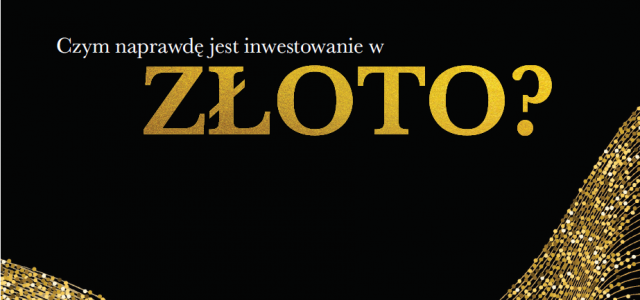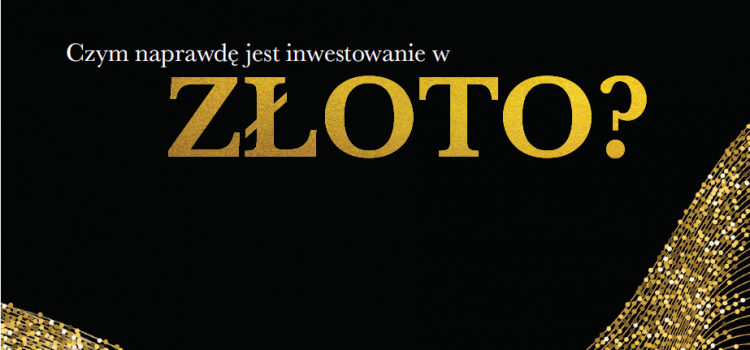


Lately gold has consumed the attention of investors. This metal is commonly referred to as an alternative investment, yet is it really something new or exotic enough in relation to the “good old” stocks, obligations, bonds and currencies, to call it “alternative”?
A SHORT HISTORY OF GOLD
Gold was the currency for approximately five thousand years. Maybe longer. The classical gołd standard was abandoned in 1933. In 1971 gold finally stopped having any sort of monetary function. From that moment on we paid with paper, and for the last few dozen years with pla-stic. Economics studies avoid the subject of gołd as much as possible, which can be inadvertently compared to the avoidance of discussing the Piast dynasty during historical studies in Poland, about Rej when studying Polish Literature, or the laws of Newton when studying physics. Considering these facts, can we call gołd an “alternative investment”?
An individual by the name of Keynes called the gołd stan-dard a relic of barbarism. And it is true; gołd is closer to the times of the barbarians than the modern era. It is primitive rather than modern. People these days do not see it as a form of currency, yet barbarians from the bygone era would not be able to contemplate the concept of accepting paper currency which we at the present value so highly. Barbarians would accept silver or gołd, from which we can just as easily forge coins as we can make antiseptic utensils, teeth,jewelry, gołd plate roofs, and picture frames, surgical instruments, heating coils for heated seats in cars, solar panels, and so much more …
PAPER MONEY
Paper currency is like mustard. It has an expiration <late. The difference is in the fact that nobody knows the exact <late when paper currency becomes outdated. If things were different a one-time printed 1 O zloty note would be valid currency indefinitely. Meanwhile, a paper 1 O-zloty bill in just the twentieth century has had seven versions, not in cl u ding the last produced in 1994, and n one of them are the valid currency for payment at any retailer. In a sense, paper bills are like mustard after dinner. Gold coins are different. Regardless of if they were minted a century or a millennium ago, they remain valuable. Although bank notes lose value daily, we have plenty of them. Gold on the other hand for decades now appreciates (1914: $20.67; 1934: $35; 1980: $850; 2011: $1900), and yet most of us only see it as materia! for making expensive shiny objects.
THE INSTINCTS OF A MODERN MAN
Modern times in a lot of ways are an anomaly. The con-sequences of the way of life we currently have is the loss of the abilities for instinctually assessing a situation. The quality of food drops, and it is well known that fast food is bad for your health. Regardless of this white sugar, proces-sed foods, burgers of doubtful origin, and pesticide treated fruits are bought by most of us.
A different example? We !et ourselves be taken by trivia! marketing gimmicks. For instance, downsizing, where the size of the product is reduced but not necessarily the packa-ging. We buy products under the illusion that it is something big. Take for example a bag of chips with a handful of them inside, super-hydrated meat, and over-fluffed bread. Butter no longer weighs 250g but 200g. Chocolate is 90g. All this an attempt to deceive our perception.
Finally, technology, which absorbs us to such a degree that we lose touch with reality. Staring at our smartphones, we eat our food, drive our cars, and even take care of our physiological needs. In the worst-case scenario, we get run over by a car. Where has our instinct gone?
GOLD
Gold and paper are like healthy food with a long shelf life and feed which loses its freshness and starts to rot quickly. The value of paper passes quickly. Gold once saved in a drawer allows us to buy products with it even after a hundred years. Yes, a hundred years ago just like today an ounce of gołd could buy you a very expensive wardrobe. Currently, it is no different. A high-quality suit made of the best fabric costs 5000 zlotys, so approximately an ounce of gołd. In 1924 Henry Ford had behind himself the production optimization of the Ford Model-T, a car model which is the point of origin for our current mid-class sedans. At the time the Ford-T cost $290 in paper or approximately 14 ounces of gołd. When putting away into a drawer the
paper and metal $290 allows us today to buy completely different things. The paper $290 will buy you a set of tires, while the gołd 290 dollars, or 14 ounces of gołd … a new mid-class sedan!
Paper has no physical value, and yet we feed our delusion that it has a factual value. Gold shines, almost to the point of blinding us, and yet we do not see in it that which it was for thousands of years. Real money.
WHAT IS INVESTING IN GOLD?
Buying gołd is not alternative investing. It is nothing more than an attempt to protect the value of our capital which we have gathered. It is the understanding of the fact that paper money has an agreed upon value. It is the intellectual understanding of the fraudulent phenomenon of inflation and an instinctual understanding of reality which at every turn attempts to deceive the consumer part of ourselves. It is the buying of bars and coins made of the purest gołd.







